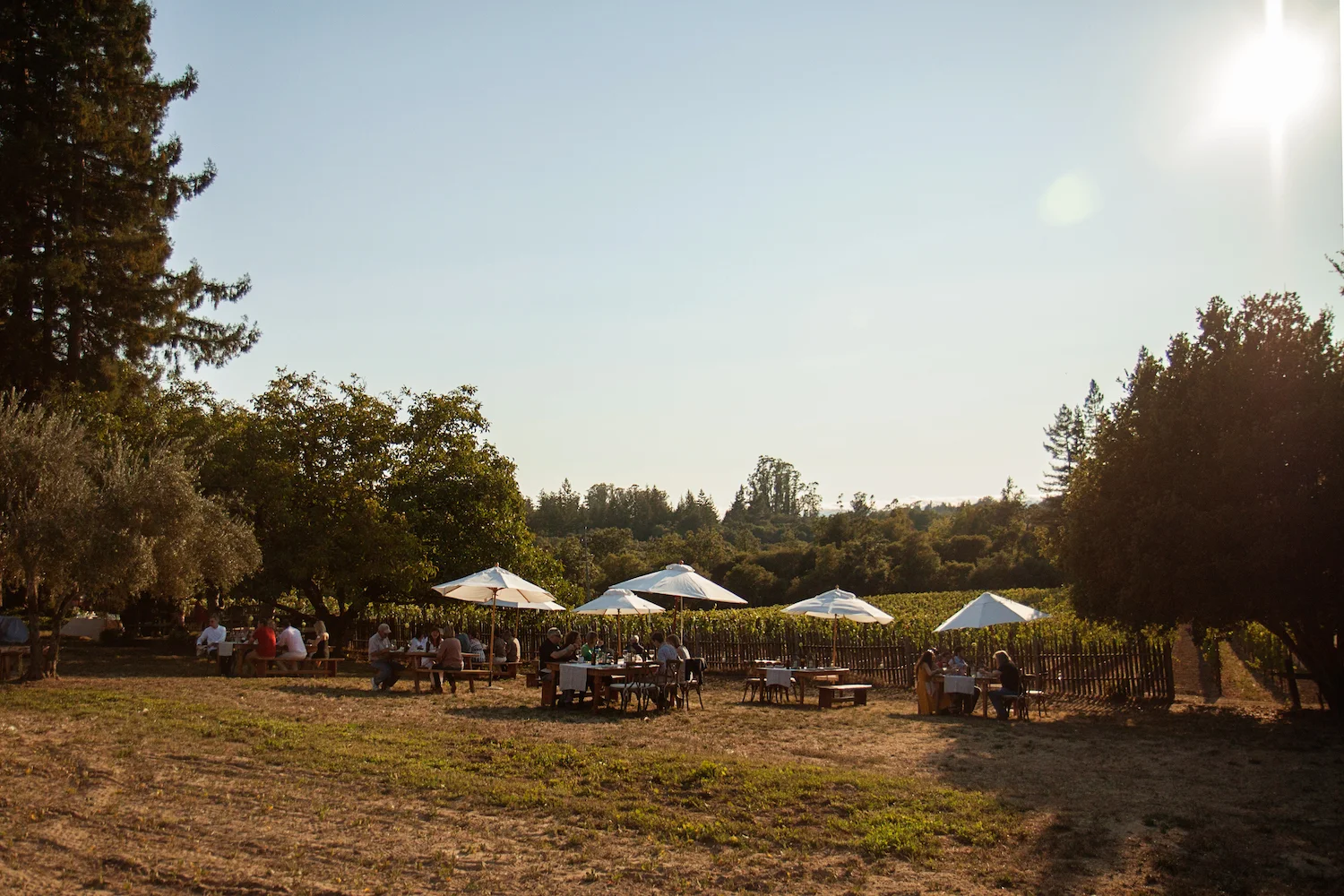Clay Gantz (right) with Dr. Kaan Kurtural, assistant Cooperative Extension specialist in viticulture at UC Davis
It has been over eight years (can you believe it?) since Celeste and I planted our vineyard in the Russian River Valley. While I can’t count the number of things I’ve learned in that time, I was nevertheless intrigued when I received the announcement for a four-day UC Davis course on grapevine production. It seemed like a wonderful opportunity to get caught up on the current science of grape growing and winemaking, and also I hoped that the course would help me pull together some of the disparate threads of knowledge if gathered over the past eight years. Sort of a “unified theory of grape growing.” My enthusiasm grew when my daughter, Angelina, expressed interest in attending the course with me.
Our classmates seeing a pruning machine in action at UC Davis’s experimental vineyard in Oakville.
We split our time between a hotel conference room in Napa and UC Davis’s experimental vineyard in Oakville, driving daily from our home in the Russian River Valley. Unfortunately, our time in the vineyard was cut in half by the unrelenting torrential rain that week. The course was a nice mix between presentation of the results of cutting-edge academic research by professors and researchers and talks and demonstrations of the practical application of that research to day-to-day grape production.
Several things stand out to me as valuable take-aways:
In the academic world, climate change is treated as a given, and people have long since moved on from debating whether it is happening or why to how are we going to deal with its consequences, in this case in the world of viticulture. A lot of time was spent discussing how to mitigate the impacts of the effects of climate change (e.g., increased heat during the growing season) through changes to our vineyard design and farming practices.
The related question of how to farm effectively in an era of diminishing resource availability (e.g., less water, less energy and less labor) was also a unifying theme. Topics such as using various technologies to make better irrigation scheduling decisions, recent developments in mechanical pruning, leafing and harvesting and their impact on grape quality, how to best monitor and correct for nutrient deficiencies and current developments in integrated pest management (e.g., using natural predators to control pest infestations) were all interesting and highly relevant.
Also, the use of new technologies, such as drone mounted remote sensors to quickly and accurately monitor vine nutritional status over an entire vineyard, will make current operations much more efficient and cheaper.
Also, I’d say that if you ever get the chance to spend time with farmers, take it. They are generally wonderful people. Ultimately, I treasured the opportunity to spend time with Angelina, exploring the complex world of wine grape farming.









